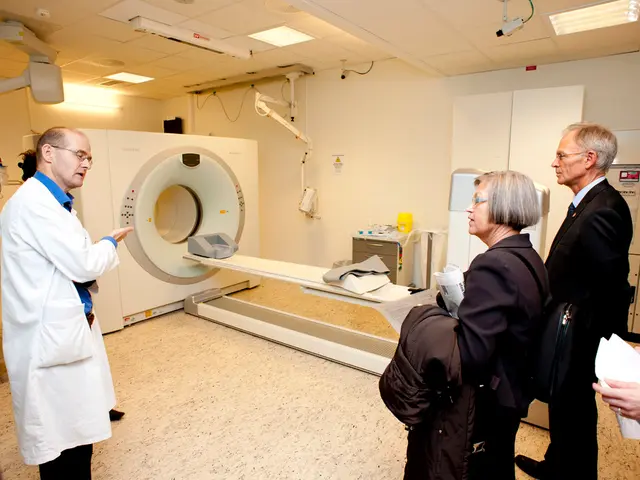Evolution of Brain Cells Over a 320 Million Year Span Unveiled by AI
In a groundbreaking study, researchers from the Max Planck Institute for Neurobiology and VIB have employed artificial intelligence (AI) to map brain cells in a diverse range of animals, including humans, mice, and chickens. This innovative approach is set to transform our understanding of brain evolution and pave the way for future advancements in the treatment of brain disorders.
The long evolutionary process of brain cells plays a significant role in shaping the unique characteristics of human brains and contributes to the development of disorders such as Alzheimer's, Parkinson's, and autism. By studying the evolution of brain cells, this research aims to reveal new insights into the origins of cognition and behavior.
The AI models developed by the VIB team can be used to study Parkinson's disease and uncover new targets for treatment. Additionally, these models can be employed to screen genomes for variations that affect brain cell function, potentially leading to new diagnostic tools or therapeutic strategies.
Many neurological diseases involve disruptions in specific types of brain cells. By understanding the conservation and changes of brain cell types over time, this research can help identify the genetic factors contributing to brain disorders. Previous work by the team has shown that regulatory codes for certain cancer cell states, like those in melanoma, are conserved across species, suggesting that similar principles may apply to brain disorders.
The expansion of the neocortex in mammals is thought to be linked to advanced cognitive functions. This research has shed new light on this evolutionary process, revealing both the unity and diversity of life on Earth. Studying brain evolution can help us understand the cognitive abilities that set humans apart from other animals, such as reasoning and language.
Future research could use these models to explore how regulatory codes vary within a single species, such as between healthy and diseased human brains. This could lead to personalized medicine approaches, tailored to an individual's unique genetic makeup and brain structure.
The use of AI in this study is a testament to how machine learning can revolutionize biological research and lead to future breakthroughs in understanding the brain and its evolution. This broader perspective will help paint a more complete picture of brain evolution across the animal kingdom, potentially revealing new insights into the origins of cognition and behavior.
Read also:
- MRI Scans in Epilepsy Diagnosis: Function and Revealed Findings
- Hematology specialist and anemia treatment: The role of a hematologist in managing anemia conditions
- Exploring the Essentials: Understanding Magnetism at its Core in an Educational Perspective
- Delineating the Complex Interplay of Attraction and Repulsion: Unraveling the Intricate Magnetic Forces








